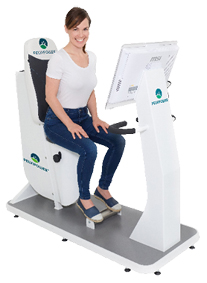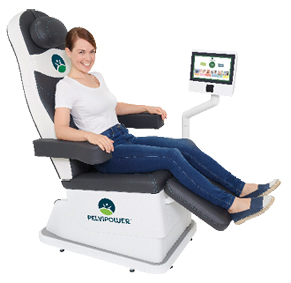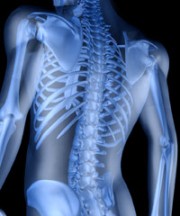Lower back pain and the unhelpful beliefs that could negatively impact your behaviours
Most of us will have inevitably suffered from some form of lower back pain in our lives, to varying degrees of severity and volumes; but it’s almost certain to have affected us somewhere along the way! That opening statement in its itself is a perfect example of how beliefs and experiences around back pain can negatively impact our behaviours, fortunately I am going to now expand on it and point you in the direction of some fantastic editorial research that has recently been published for the benefit of the general public.
 Lower back pain (LBP) is the leading cause of disability worldwide, but the way we as health care professionals and you as patients understand the pathology may differ. In an ever-progressing world of research; there are even gaps of knowledge within sub-groups of practitioners that negatively impact the way LBP is perceived and treated. We hear about it through all media channels and we have an understanding of the ways pain management is prescribed and how we are instructed as patients to manage LBP. Common beliefs and understanding on these factors can influence the way individuals perceive and understand LBP and ultimately the affect it can have on the way you live your life.
Lower back pain (LBP) is the leading cause of disability worldwide, but the way we as health care professionals and you as patients understand the pathology may differ. In an ever-progressing world of research; there are even gaps of knowledge within sub-groups of practitioners that negatively impact the way LBP is perceived and treated. We hear about it through all media channels and we have an understanding of the ways pain management is prescribed and how we are instructed as patients to manage LBP. Common beliefs and understanding on these factors can influence the way individuals perceive and understand LBP and ultimately the affect it can have on the way you live your life.
In this blog I will review the aforementioned article and address the fact’s from my own point of view and experience;
Ten unhelpful LBP beliefs;
Unhelpful LBP beliefs are common, culturally endorsed and not supported by evidence.
Myth 1: LBP is usually a serious medical condition
You can feel debilitated or in an amount of pain that indicates a serious pathology; but the facts are the vast majority of LBP cases are not life-threatening pathologies that cause permanent disability.
Myth 2: LBP will become persistent and deteriorate in later life
There is no strong research to support an association with age and deterioration in LBP; age is not a risk factor – we are all subject to the same level of risk; of which there are very well supported methods of managing LBP.
Myth 3: Persistent LBP is always related to tissue damage
Having a reoccurrence of the same type of LBP doesn’t mean the same structures are being damaged to an increasing degree each time – it may feel that way because the pain can get worse but the soft tissue structure that are involved in LBP will heal within a normal time frame. There are a multitude or internal and external factors that relate to pain replication which can be managed and overcome.
Myth 4: Scans are always needed to detect the cause of LBP.
Scans are unlikely to tell us anything different to what we already know. There can be the same scan presentation in a person with and without LBP; again, it’s the multi-faceted level of factors contributing to our pain which are more important than scan results.
Myth 5: Pain related to exercise and movement is always a warning that harm is being done to the spine and a signal to stop or modify activity
There are really clear and accurate ways to monitor painful responses during exercise; most of the time – pain is acceptable during exercise/rehab and is more likely to be beneficial than harmful. Increasing your exposure to painful movement/tasks is one of the more effective way to reduce your sensitivity to these painful triggers.
Myth 6: LBP is caused by poor posture when sitting, standing and lifting
A really common one; posture does not cause pain, plain and simple. Stress, anxiety, sleep deprivation, periods of persistent working/inactivity are more likely to be the cause of posture related pain rather than the position its self. Get up, move, meditate, talk to your peers and share experiences; it will make a difference.
Myth 7: LBP is caused by weak ‘core’ muscles and and having a strong core protects against future LBP
Our ‘core muscles’ control spinal movement; so, it makes sense that weakness increases our injury risk, right? Wrong. Varying the degree and quality of movement in our lower back; along with the able to transfer weight through our trunk gives us more dynamic movements; but weak muscles do not cause pain.
Myth 8: Repeated spinal loading results in ‘wear and tear’ and tissue damage
Heavy lifting and forward bending do not wear out the spinal discs, it actually lubricates them and some studies have found evidence to support increasing strength of discs with increased loads, just make sure these movements are familiar and build them up.
Myth 9: Pain flare-ups are a sign of tissue damage and require rest
Similar to Myth 5; there are a number of factors that can cause pain replication, sensitivity related to previous movements, tasks, scenarios and intrinsic factors are most likely to be the causes of pain; and your practitioner should talk you through understanding this and how to manage it before you refer back for re-assessment (if needed at all).
Myth 10: Treatments such as strong medications, injections and surgery are effective, and necessary, to treat LBP
These interventions are invasion, have varying success rates, complication risks and secondary symptoms; the long-term benefits are not guaranteed. Of course, there are pathologies and examples where these treatments are more likely to be necessary; but for the majority of LBP patients; they just aren’t needed.
 So that’s it, also check out this useful infographic about Back Facts
So that’s it, also check out this useful infographic about Back Facts
Keep your eyes peeled for more on this subject!
Adam 😊
Blog post by Adam
Senior Physiotherapist at Emma James Physio




 There is a new Swiss technology-driven treatment for increasingly common issues such as incontinence, pelvic girdle pain, sexual health/dysfunction, and back pain.
There is a new Swiss technology-driven treatment for increasingly common issues such as incontinence, pelvic girdle pain, sexual health/dysfunction, and back pain. The
The 

 The scapular area consists of:
The scapular area consists of: Look after those backs buddies!
Look after those backs buddies!







Recent Comments